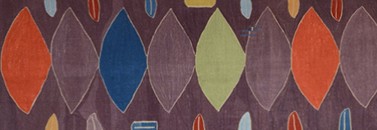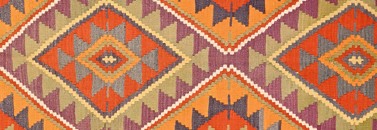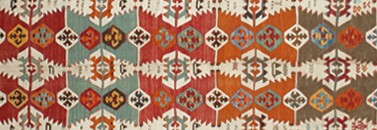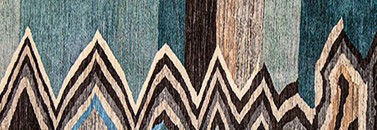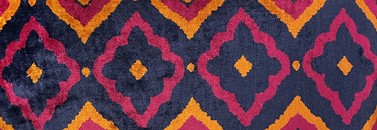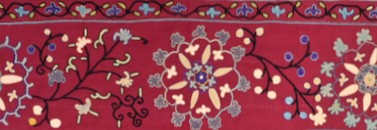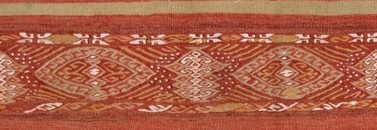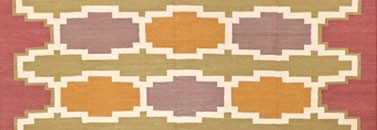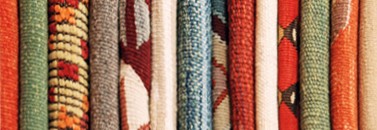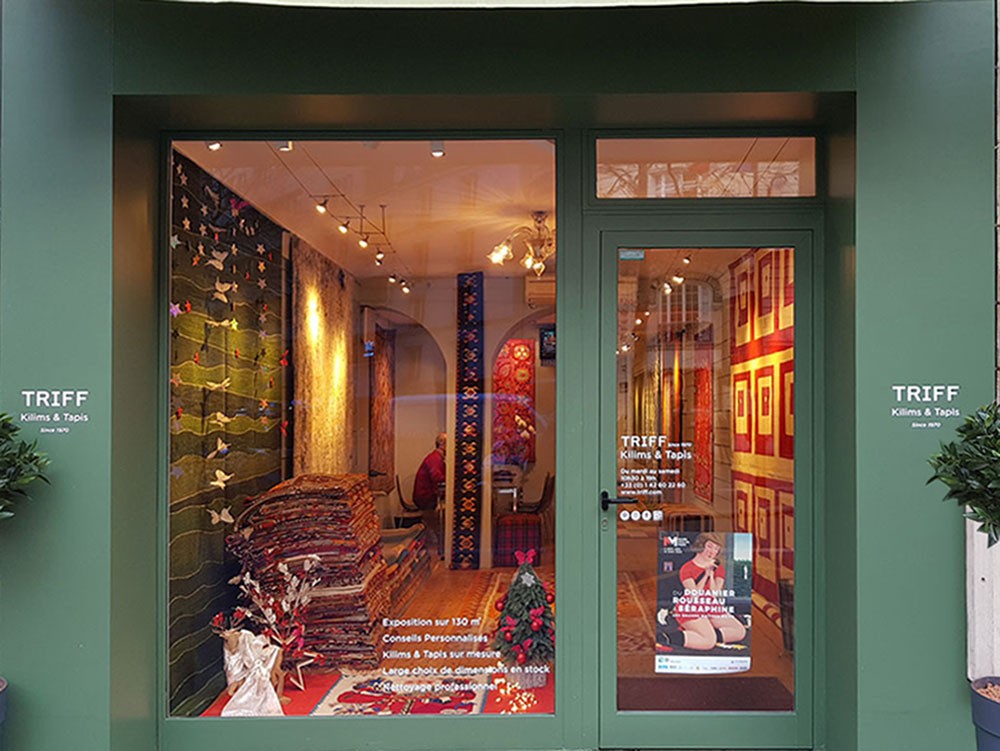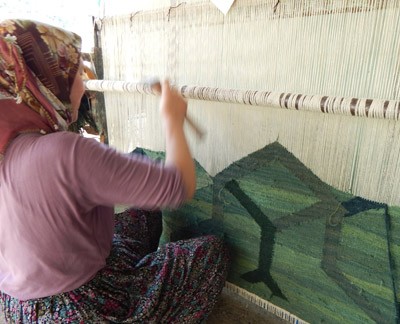- date_range 24 nov. 2023
- person Nathalie Daumas
- toc Our posts
- favorite 1 likes
- remove_red_eye 6407 views
What is a sofreh?
First and foremost, it's an invitation to an ancestral tradition. A sofreh is a small "kilim" weave, usually square in shape, which was once used as a tablecloth or to wrap bread.
Originating among the nomadic peoples of Iran, this weaving reveals a singular aesthetic and symbolism. The motifs, colors and arrangement of the elements speak to us of a universe specific to these peoples, of a vision of the world, of a discreet but omnipresent poetry.
Women took particular care with these weavings, which have a strong symbolic value. While most sofrehs are very classical, with a border and a counter-border, always in the same repertoire of dark colors, some women gave free rein to their inspiration, like true artists and without ever having been aware of art, they created pieces of great abstraction and beauty. What's most striking is the attention, care and delicacy that the women accorded to this everyday object.
In this way, sofreh is much more than a simple weave. It's an open book on a culture, a window on another time, an ode to beauty and tradition.
The most astonishing sofrehs are those woven by the women of Iran's Afshar and Kamoo tribes. Some of these women have created veritable art pieces of uncommon refinement and modernity. Galerie TRIFF has taken great care to select only the most exceptional pieces - just 5% of those woven.
A Textile Odyssey: The Lion Emblem of Persia
There are works of art that, from the very first glance, seize you, transport you, move you deeply. This Sofreh Afshar is one of them. Among the multitude of textile creations, it stands out not only for its age - dating from the first half of the 20th century - but also for the symbolism of its central motif: the solar lion of Persia.
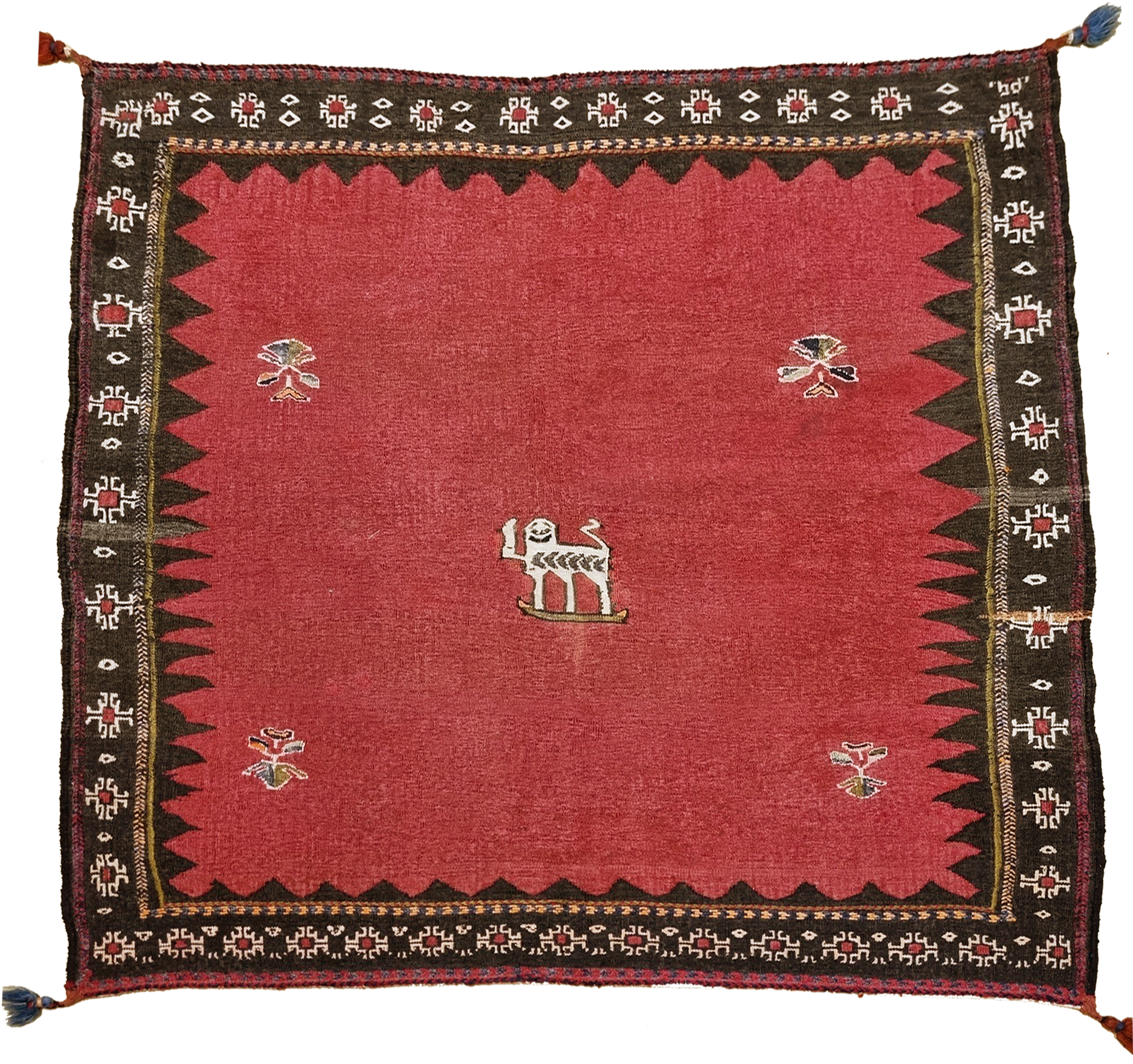 Not just any lion, it's the emblem of royal Persia and the central motif of the flag of Iran from 1576 to 1979. It's a highly stylized representation of Iran's power, with a sword in its front right paw. This sofreh seems to whisper to you stories of bygone days, tales of ancient Iran, of women with unrivalled talents.
Not just any lion, it's the emblem of royal Persia and the central motif of the flag of Iran from 1576 to 1979. It's a highly stylized representation of Iran's power, with a sword in its front right paw. This sofreh seems to whisper to you stories of bygone days, tales of ancient Iran, of women with unrivalled talents.
And what about the intricate, refined border that surrounds our lion with infinite delicacy? As for the 4 floating symbols, they represent the trees of life, watching over him, giving him a sacred dimension, a mystical aura. They are like the silent guardians of this textile treasure.
But this Sofreh Afshar is not just a collector's item or a decorative object. It's an open door to a bygone world, a time when every brushstroke, every choice of color, every woven motif was charged with meaning, symbolism and emotion. It's a vibrant tribute to tradition, a reminder of the beauty that emerges when creativity meets tradition.
It is, in short, an ode to the art of weaving, not just threads, but stories, dreams and memories. And through this lion, an entire culture, rich and diverse, invites us to plunge into its depths and rediscover the world with wondering eyes.
Sofreh: A Window on the Iranian Soul
When art and habitat come together, they transform not only the space, but also the soul of those who live there. The sofreh is a bridge between worlds, an invitation to integrate history and culture into the very heart of our homes. Placed on the wall, it becomes a painting, an open window on Iranian art, on centuries of history and creativity. On the floor, it creates space.
Integrating this masterpiece into our interiors is not just a question of aesthetics; it's a choice to surround ourselves with beauty, meaning and depth. It's deciding that our everyday lives deserve refinement, that our lives should be a constant voyage of discovery. By welcoming sofreh into your home, you embrace a precious part of the Iranian soul, and offer it a special place in the story of your own existence.
At the Crossroads of Tradition and Modernity: The Call of the TRIFF Gallery
For those who, captivated by the evocation of a single sofreh, wish to extend their journey into the heart of Iranian art, Galerie TRIFF opens its doors wide.
Each piece, carefully selected, can be likened to art brut, a witness to tradition. They are bridges between yesterday and today, between ancestral know-how and modern interpretations. As you browse through this collection, you are invited to meditate on time, on art, on what transmission really means.
The TRIFF Gallery is more than just a showcase; it's an invitation, a call to embrace the richness of a heritage, to understand how, in the weaving of a Sofreh, modernity can blend with tradition, how novelty can emanate from the past. I invite you to discover, reflect and contemplate.

